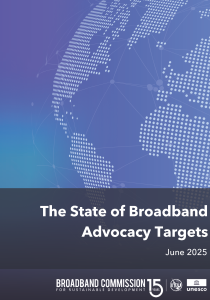Yesterday, the Toronto Star printed an article recognizing the 10th anniversary of Ontario’s Electronic Child Health Network (eCHN).
I read the story and wondered if we should be celebrating or mourning eCHN’s achievements over the past 10 years.
The article says:
Last week, eCHN celebrated its 10th anniversary. It is now hailed as the model for a comprehensive provincial system of electronic health records. It covers every region, encompasses 100 hospitals and includes the medical histories of 1.2 million children.
…
The database is still a work in progress. Children without hospital records aren’t included. Most physicians in private practice aren’t part of it. And 50 or so hospitals have yet to be connected.
So, after 10 years, most physicians in private practice aren’t connected, but isn’t that where most children’s medical records are located? Aren’t private physicians providing the bulk of our kids’ primary care?
As a result, the eCHN can’t have the complete medical histories of 1.2M children, it has partial records. As the article says:
Access to up-to-date information eliminates guesswork, reduces delays in treatment and lowers the risk of adverse drug reactions. It allows all the doctors, nurses and therapists working on a child’s case to see the big picture.
Without the private physicians records, how can we avoid either delays or guesswork. For a project 10 years in the works, has eCHN gone far enough?
The results from eCHN proves that the project is doable, but it seems to me that we need to get it done.
An article about Terry Matthews in the Ottawa Business Journal celebrates the energy of top rated new grads. A comment in that article observes that 10 years ago, the founders of Google had nothing but fire in their belly.
I’m not suggesting that eCHN should be held to such a Google-like standard – no project on the planet could- but with billions of dollars per year in Ontario health care spending, should we not be demanding a faster pace of modernization for the system?
 The Federal Budget included funds to accelerate electronic health records [which we observed should be a positive for TELUS Health Solutions]. Provincial governments need to invest as well in this kind of keyboard-ready infrastructure. This is a stimulus plan that is almost certain to produce a positive ROI.
The Federal Budget included funds to accelerate electronic health records [which we observed should be a positive for TELUS Health Solutions]. Provincial governments need to invest as well in this kind of keyboard-ready infrastructure. This is a stimulus plan that is almost certain to produce a positive ROI.
 Last week, I wrote about the slow pace of adoption of electronic health records by Ontario’s private physicians.
Last week, I wrote about the slow pace of adoption of electronic health records by Ontario’s private physicians.

